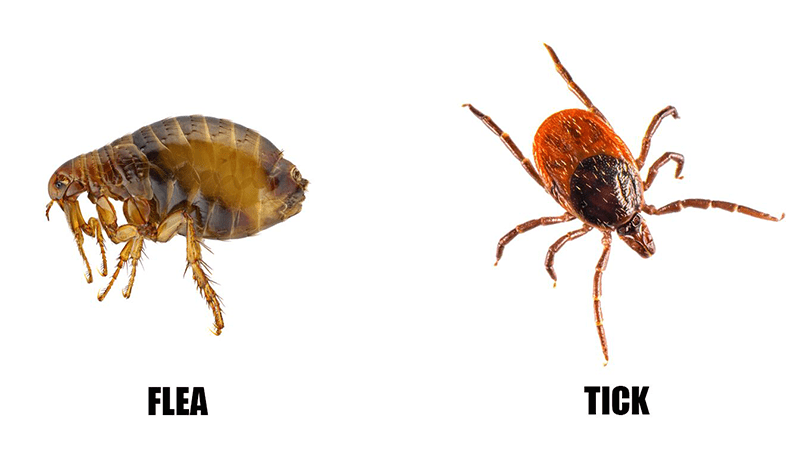Ticks are still out! Despite popular belief, ticks are crawling around Minnesota all year, even in the winter. Last month we discussed ticks and the diseases they carry. This week we would like to share some information with you about two different tick and flea preventatives: Frontline Gold and Nexgard. Let’s start off by discussing why fleas and ticks are harmful to pets.
(Allow 5-7 minutes to read this post.)
Fleas & Ticks: Part 1
Ticks
Ticks are those creepy-crawly bugs that embed themselves in the skin of animals and humans and gorge themselves on blood. There are several tick-borne diseases that can be transmitted by a tick bite. All of these diseases are more common in dogs than in cats, but both species can be affected. The most common tick-borne diseases currently in Minnesota that affect pets include:
Lyme disease: Dogs with lyme disease could show a variety of symptoms, with the most typical being fever, reduced appetite, lethargy, lameness, and generalized discomfort. Cats with lyme disease often don’t show any symptoms at all, but some may lose their appetite and become lethargic. Lyme disease in cats and dogs can progress to lameness, kidney failure and/or heart disease. Minnesota is one of the highest-risk states for canine lyme disease in the U.S.
Anaplasmosis: This tick-borne infection often causes symptoms similar to lyme disease (lameness, joint pain, lethargy, fever, and reduced appetite). Both cats and dogs could be asymptomatic (not showing any symptoms) when infected with anaplasmosis.
Ehrlichiosis: This disease is caused by the Ehrlichia organism. Dogs that are infected with Ehrlichia will generally start to show signs of fever, difficulty breathing, weight loss, and spontaneous hemorrhaging/bleeding. Sometimes dogs may have difficulty standing. As the disease progresses, dogs will stop showing any symptoms for a limited time, but then will develop multiple severe issues such as anemia, bleeding, lameness, blindness, swollen limbs, bone marrow failure, and/or neurological problems. Clinical signs in cats may include eye inflammation and discharge, swollen joints, difficulty breathing, anemia, fever, loss of appetite, lethargy and weight loss.
Fleas
Like ticks, fleas are tiny parasites that feast on animal and human blood. Pets who have fleas will start scratching or biting at their fur as flea saliva contains a substance that irritates the skin, and flea bites are painful. Some pets are very sensitive to flea bites, and a single bite can cause severe itching and fur loss.
Adult fleas are visible to the naked eye. They are approximately 1/8 inch long and are reddish-brown. If you look closely you can see the adult fleas moving around. The adults will lay eggs that look like tiny white ovals, which hatch into larvae within a few days. Females can lay up to 500 eggs at a time, so even one flea can cause a full-blown infestation.
Adult fleas leave behind a substance that is often referred to as flea dirt. This is actually tiny specks of dried blood that look like pepper and could be on your pet’s skin, or any other place a flea has been. Fleas can jump up to a foot in the air, so if they’re on your pet, they could also be in your carpet, on your furniture, in your bedding, and on you.
Stay tuned for Part 2! Tomorrow we’ll cover the differences between the two preventatives that we recommend (Frontline Gold and Nexgard) and discuss when pets may need to be on preventatives for more than just the summer months.






